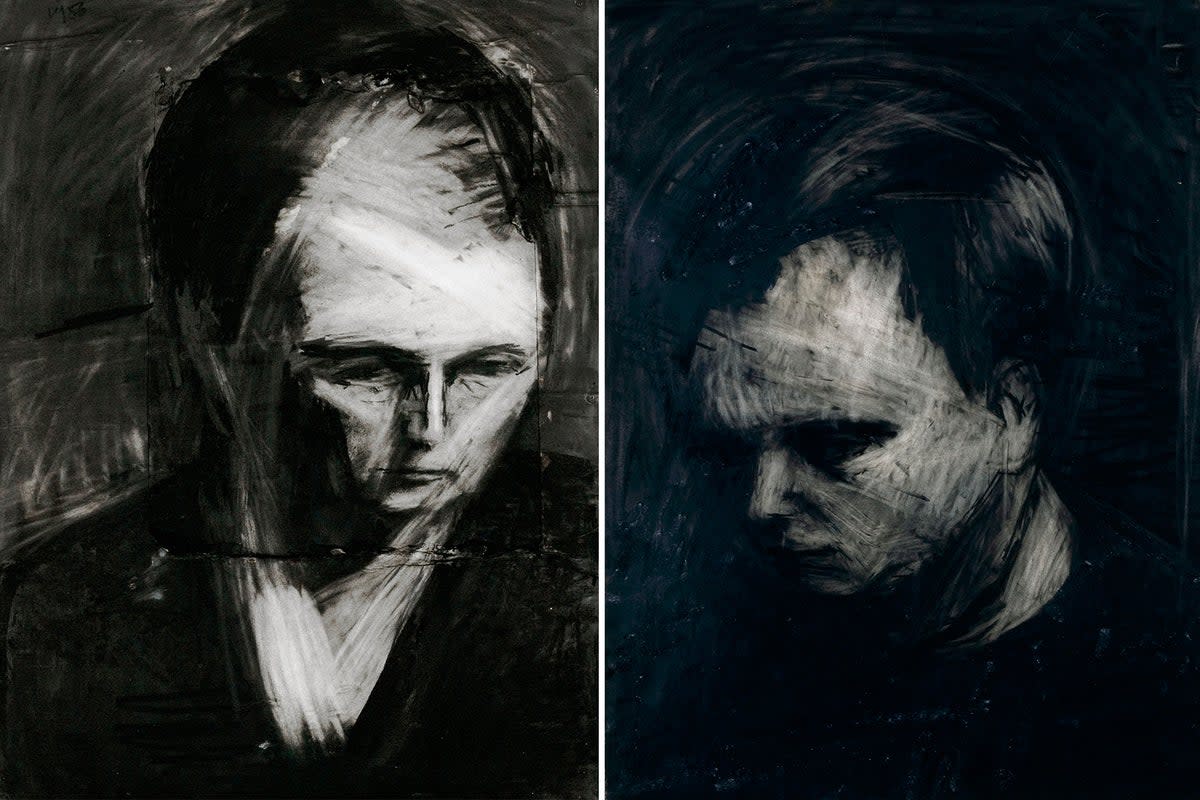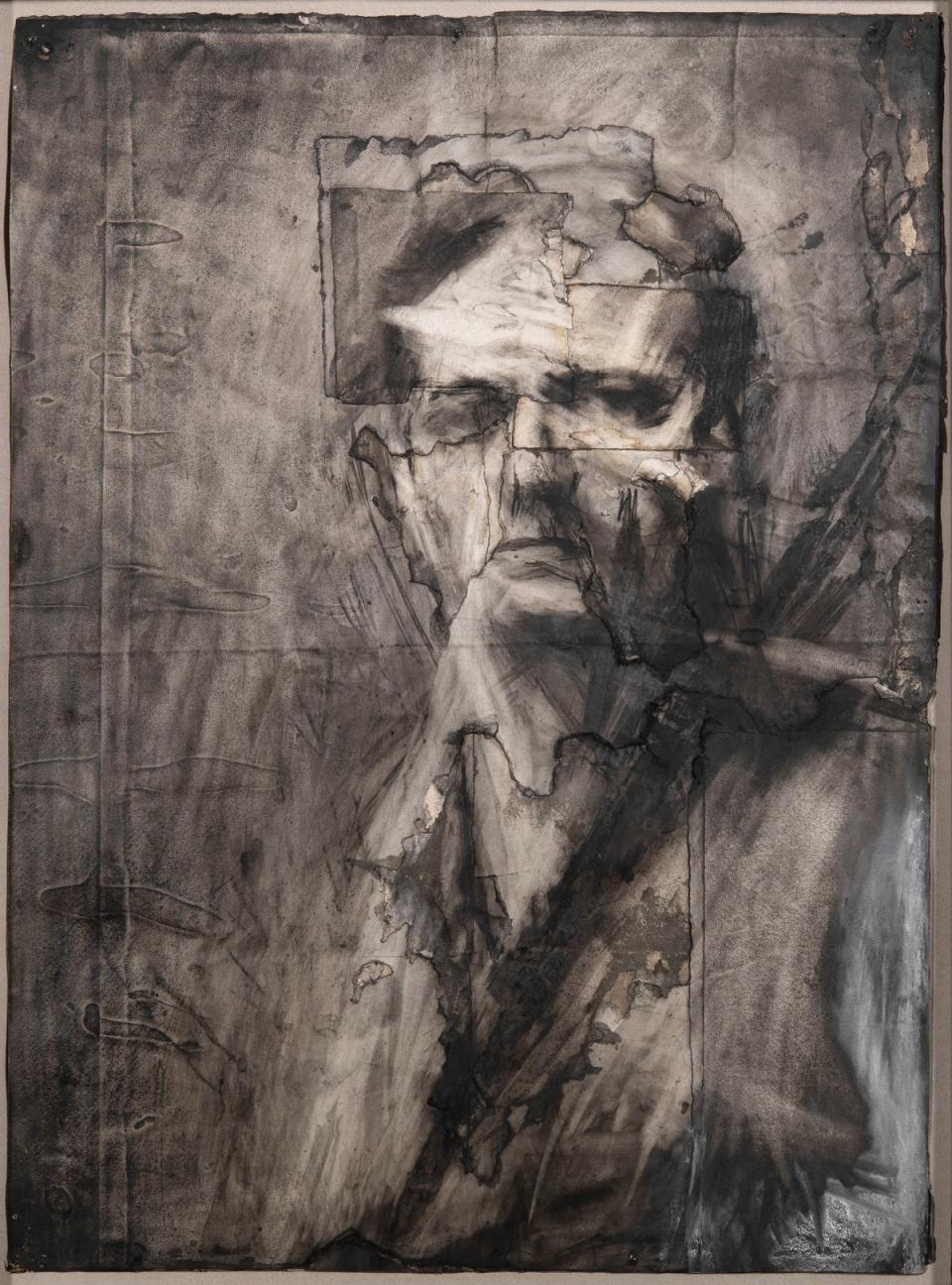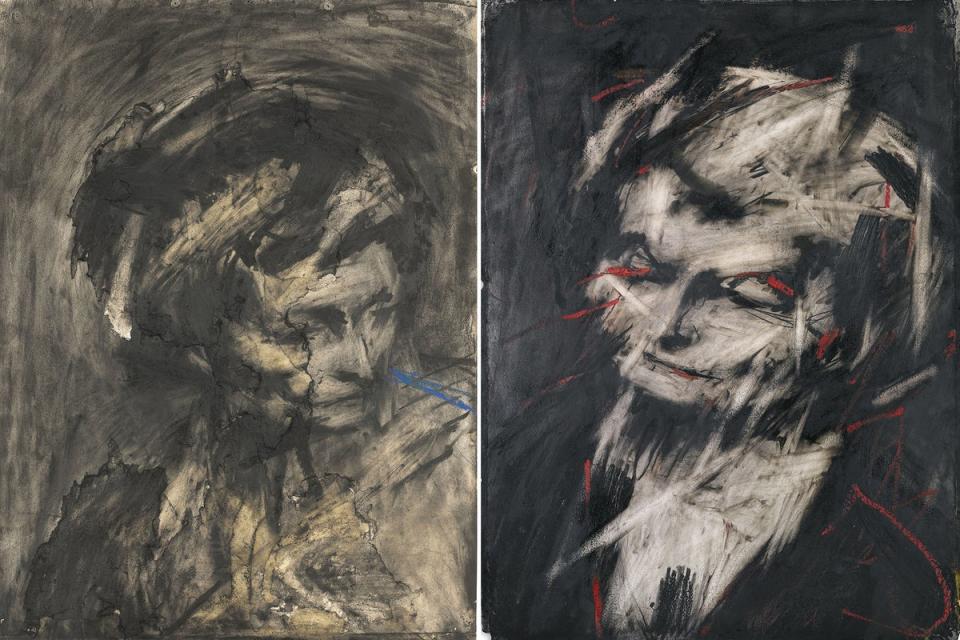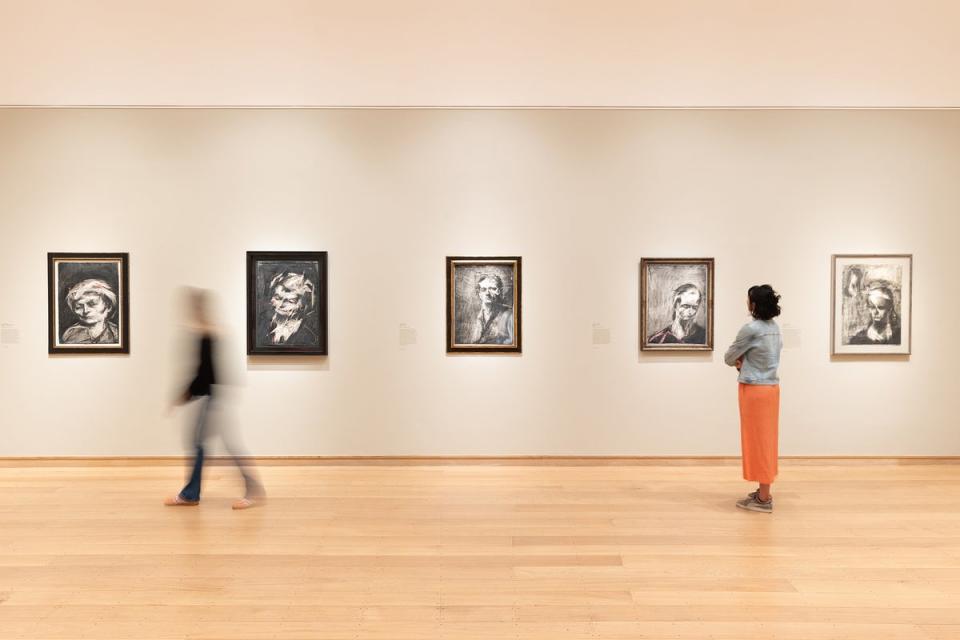Frank Auerbach – The Charcoal Heads review: 23 drawings, one epic experience

- Oops!Something went wrong.Please try again later.
- Oops!Something went wrong.Please try again later.
The painters of the so-called School of London remain just about the biggest draw in British art. Not so much a school, more a band of fiercely competitive drinking buddies, these post-war alpha-mavericks (Francis Bacon, Lucian Freud, Frank Auerbach et al) went through a dip in popularity in the Sixties. But since a resurgence in the Seventies, their status as British modern masters has kept on growing to the extent it now feels positively unpatriotic to say a word against them.
While some will question their relevance in our hyper-digital, identity-obsessed times, not even the most hardened cynic could fail to give Frank Auerbach, last man standing of the original core group, respect for his sheer commitment to his art. At 92, he is still working all day, every day. Indeed, if it’s often said that School of London art never quite escapes the gloomy vibe of the austerity era garret, Auerbach still is working in the same Camden Town studio he has occupied since the 1950s.

A snapshot exhibition of what he’s producing there now would be fascinating to see. What the Courtauld Gallery is giving us instead feels even more of a privilege, a group of his classic large charcoal drawings from the Fifties brought together for the first time since he did them. They are breakthrough works that set up the preoccupations that have absorbed him over the intervening seven decades.
Born in Berlin in 1931, Auerbach, came to Britain on a Kindertransport aged eight. Like his friend Lucian Freud, also a refugee from Hitler, Auerbach has tended to focus on a small number of sitters, most of whom he has known extremely well – some lovers – who he has drawn and painted endlessly in immensely long sittings, sometimes over decades.
In his painted portraits of “EOW” – his then lover Estella West – he built up the subject’s features in mounds of undiluted oil paint so thick they look like they can hardly have dried even now. These are absolutely iconic works of that post-war period, with that sense of monastic, even desperate dedication to the painted human image that is the hallmark of the best School of London art.

The works here are the drawn equivalent of those paintings. Not studies for them but major works in their own right, in which Auerbach literally fights to get his sitters’ likenesses onto paper. If a drawing doesn’t capture what he’s after, he rubs it out immediately, and keeps on working, rubbing out effort after effort till there’s virtually no paper left. Roughly patched together with other bits of paper, two portraits of EOW – among 70 he was to produce of her – have a ravaged, almost graffiti-like quality with their layers of smeared and gouged charcoal marks.
A sense of intense physical and spiritual effort is evident the moment you look at these works – and that’s entirely as intended. Portraits of Auerbach’s close friend, the painter Leon Kossoff, in which the subject seems to be dissolving simultaneously into the dense, dark background and the murk of his own thoughts, have a touch of the “existential” quality people tend to read into art of this period. In the aftermath of the most horrific war the world had ever seen, there was the sense that the very notion of “humanity” was in question. That might sound a touch rarefied amid the mundane realities of an ill-heated Camden Town studio, but with Auerbach’s parents having been killed in Auschwitz, it would be surprising if such things weren’t on his mind.

The extent to which Auerbach brings his subjects before us as people is debatable. He tends to view them slightly from above, with their foreheads prominent and eyes downcast, so male and female sitters look similarly preoccupied and remote. Even in later drawings of EOW, where his older lover is looking directly out at us, it’s the torn surfaces and startling highlights created by swiping an eraser over the charcoal that catch our attention. Her eyes are mere worn blurs.
But then Auerbach is concerned less with psychology than with the energy and aura that emerge over protracted periods of looking at a single person: the feeling that they become stranger, rather than more familiar, as he keeps on drawing. We get a strong sense of this in Head of Julia (1960), of his wife Julia Wolstenholme – the person you’d imagine he knew better than anyone – where the zigzagging highlights seem to both illuminate and brutalise the sitter. That touch of ruthlessness is evidence perhaps of the artist’s youth. The coherence and maturity of the work is such that we have to keep reminding ourselves Auerbach was only in his mid-twenties when he did most of these drawings.

In some of the later works, such as the portraits of Helen Gillespie and his cousin Gerda Boehm, Auerbach’s dab hand with charcoal, eraser and torn paper starts to feel a bit mannered and decorative, as though his trademark ravaged surfaces have become just a convenient way to make a compelling, even seductive image. But that dip in intensity only serves to make the uncompromising rawness of the earlier works seem even more remarkable. He has kept on levelling his unflinching gaze at the human form practically every day since. That some of the resulting works are very much better than others is simply in the nature of what he does.
Auerbach’s name and School of London associations will guarantee this relatively small show is a significant draw. It only contains 23 works, but it still feels like an epic experience.
Courtauld Gallery, from 9 Feb 9 until 27 May

